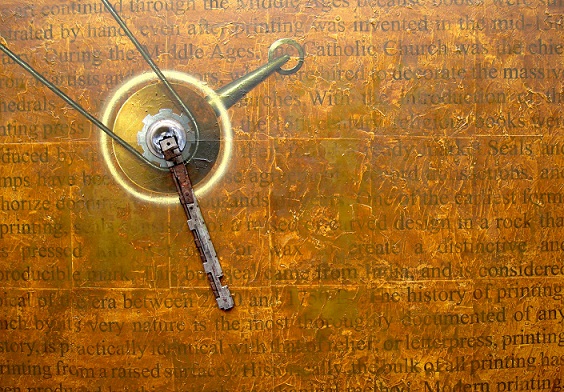The art year is closing in Lagos. The auctions are over, few exhibitions are planned for the remainder of the year and artists, dealers and collectors are already thinking of their Christmas holidays. And then, unexpectedly, Kelani Abass and Omenka Gallery give us a Christmas present: the exhibition “Man and Machine”.
It has been only four years since Kelani graduated at Yabatech as the best painting student, but in this short period of time he has moved from a conventional, stereotypical mode of representation, to an intimate, highly personal body of work. He seems to have left behind the market scenes, the skilful depiction of motor parks and road sides, and delved into the creation of an imaginary world where man and machine take the whole space. He has moved from merely re-presenting the surrounding environment, and particularly people, to enquire about issues, both personal and societal. That is why a purely formal analysis of his new works would be insufficient. Looking exclusively at their formal properties would not be enough. These works can be “read” at different levels.
I met Kelani in the morning hours, when only he and I were at the gallery. This allowed me the chance of listening to him without hurry and getting a better understanding of the background and genesis of this exhibition. He explained to me how the thread linking these recent works is the industrial printing process and the machines used to make it possible. His late father had a printing press and he spent countless hours there. Even before leaving primary school he was already involved in the preparation of artworks for the printing jobs. By the time he left for Yabatech, he was conversant with the mechanical processes involved in printing. And this was before the arrival of “offset printing” or digital imaging!. As he says in the exhibition catalogue: “it is fascinating to observe the way machines operate as different parts to achieve a common goal. This informs my thinking and my ideas, and thus inspires my art in this direction”. He is especially interested in the wheels, as central elements in industrial machines.
The influences are still discernible. The way he works the textures and the materiality of his canvasses brings to mind some of abstract works of Kolade Oshinowo, his teacher at Yabatech. The freedom with which he approaches them echoes the ways proposed by Mike Omoighe.
These works go beyond the easy realism. They are more in line with neo-expressionist experiments. There is in them a mixture of abstract backgrounds with superimposed figurative elements and applied objects. The play between real and drawn mechanical elements is particularly successful. And this makes me think of the way aesthetic and non-aesthetic (or should I say, visual and non-visual) properties interplay in the best samples of traditional and contemporary art. These works are beautiful to the eyes, but there is more than what the eyes see. There is something only the mind can apprehend, and it is this “something” that puts these works above the usual stuff.
There is restrain and these works and there is “soul”. They radiate warmth that is not only the result of the subdued and earthy ochres and greys. This is a personal story, and the canvasses abound in subtle personal references, like the insertion of a small photographic plate in which Kelani’s father appears. But he also transcends the personal and the intimate; the numerous references to political and societal leaders also show an artist going beyond “his” art. This is uncommon and this is encouraging. It seems, there is life after the market places, the motor parks and the other “genres” so sought after by tourists and nouveau rich.
It is always heartening to come across artworks of this quality. I am glad I did not miss this exhibition. I am already looking forward to the next one.










